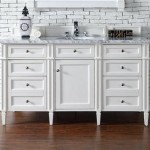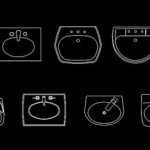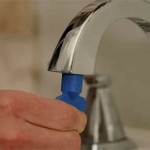```html
1920s Bathroom Sinks: A Guide to Design, Materials, and Historical Significance
The 1920s witnessed a significant transformation in bathroom design, moving away from purely functional spaces towards areas of greater comfort and stylistic expression. The bathroom sink, or washbasin as it was sometimes referred to, played a crucial role in this evolution. This article will explore the distinct characteristics of 1920s bathroom sinks, examining the prevalent designs, materials used, and the historical context that shaped their popularity.
Key Design Features of 1920s Bathroom Sinks
Several defining features distinguish 1920s bathroom sinks from those of previous eras, and even from later decades. A shift towards more streamlined aesthetics, influenced by the burgeoning Art Deco movement, can be observed. The overall appearance prioritized cleanliness, hygiene, and a sense of modern sophistication. Ornamentation, while present, was generally restrained compared to the more elaborate Victorian styles. A key characteristic was the pedestal sink, becoming increasingly popular. Pedestal sinks offered a visual elegance and a sense of openness compared to wall-mounted or cabinet-based options, which were also available. The pedestal provided a clean, uninterrupted line from the basin to the floor, often concealing plumbing fixtures.
Basin shapes varied, with oval and rectangular designs being the most common. While round basins were still present, the preference leaned towards shapes that offered a more angular and geometric aesthetic. The edges of the basins were often slightly rounded for comfort and safety, but the overall impression was one of controlled geometry. The size of the basin was also important. Sinks were generally larger and deeper than those of earlier periods, reflecting an increased emphasis on functionality and ease of use. This was partially driven by improved plumbing infrastructure, allowing for better water pressure and drainage.
Faucet design was another crucial element. Separate hot and cold water taps were standard, often featuring porcelain or metal levers with elegant Art Deco detailing. Cross-handle faucets, with their distinctive X-shaped design, were also popular. The faucet finishes were predominantly chrome or nickel, chosen for their durability and reflective qualities. These metals provided a bright, clean look that complemented the white porcelain of the sink. The placement of the faucets was typically centered above the basin, creating a symmetrical and balanced appearance.
Overflow drains, designed to prevent water from overflowing the basin, were a common feature. These drains were usually simple and unobtrusive, blending seamlessly into the design of the sink. The drain stopper mechanism varied, ranging from simple plug-style stoppers to more sophisticated pop-up designs. The choice of mechanism often depended on the manufacturer and the overall price point of the sink.
Materials and Manufacturing Techniques
The primary material for 1920s bathroom sinks was vitreous china. Vitreous china is a type of ceramic that has been fired at a high temperature to create a durable, non-porous, and stain-resistant surface. This material was ideal for bathroom sinks due to its hygienic properties and ease of cleaning. The smooth, glossy finish of vitreous china also contributed to the aesthetic appeal of the sinks.
The manufacturing process involved molding the clay into the desired shape, followed by firing in a kiln. Multiple layers of glaze were applied to achieve the final finish. Skilled artisans were responsible for ensuring the quality and consistency of the finished product. The production of vitreous china sinks was a relatively labor-intensive process, contributing to the cost of these fixtures.
While vitreous china was the most common material, other options were available, albeit less frequently. Cast iron sinks with a porcelain enamel coating were sometimes used, particularly in higher-end bathrooms. These sinks were extremely durable and offered a classic look. However, they were also heavier and more expensive than vitreous china sinks. Other materials, such as marble or other natural stones, were occasionally used for countertops or integrated sinks, but these were typically reserved for very luxurious bathrooms.
The metal components of the sink, such as the faucets, drain fittings, and pedestal base, were typically made of brass, chrome, or nickel. Brass was often used as a base metal due to its corrosion resistance and workability. Chrome and nickel plating provided a durable and attractive finish. The choice of metal finish often depended on the overall design aesthetic of the bathroom.
Historical Context and Influence
The rise of 1920s bathroom sink design was inextricably linked to the social and technological changes of the era. The decade was characterized by economic prosperity, technological innovation, and a growing emphasis on hygiene and convenience. Indoor plumbing was becoming increasingly common, even in middle-class homes, leading to an increased demand for stylish and functional bathroom fixtures.
The Art Deco movement, with its emphasis on geometric shapes, clean lines, and modern materials, had a profound influence on bathroom design. Art Deco aesthetics were reflected in the streamlined shapes of the sinks, the geometric patterns of the faucets, and the use of chrome and nickel finishes. The emphasis on hygiene was also a key factor, driving the demand for smooth, non-porous surfaces that were easy to clean and disinfect.
Manufacturers of bathroom fixtures played a significant role in shaping design trends. Companies such as Kohler, Crane, and Standard Sanitary (later American Standard) introduced innovative designs and manufacturing techniques that helped to popularize the 1920s bathroom aesthetic. These companies produced a wide range of sinks, faucets, and other fixtures, catering to different price points and design preferences. Advertisements for these products often emphasized the modern conveniences and hygienic benefits of the new bathroom fixtures.
Furthermore, the increased availability of household cleaning products contributed to the popularity of white and light-colored bathroom fixtures. White porcelain was seen as a symbol of cleanliness and purity, and it was also easy to maintain with the new cleaning products that were becoming available. This preference for white and light colors further reinforced the clean and modern aesthetic of the 1920s bathroom.
The impact of the 1920s bathroom sink on subsequent design trends is undeniable. The emphasis on clean lines, functional design, and durable materials continues to be influential in modern bathroom design. While materials and technologies have evolved, the fundamental principles of good design and hygiene remain as relevant today as they were a century ago. The 1920s bathroom sink serves as a reminder of a pivotal moment in the history of bathroom design, a time when the bathroom transformed from a purely utilitarian space into a more comfortable and stylish area of the home.
```
Modern 1920s Bathroom Shabby Chic Style Chicago By Wheatland Custom Cabinetry Woodwork Houzz

1920s Bathroom Renovation Our True To Period Remodel Average But Inspired

1920s Bathroom Renovation Our True To Period Remodel Average But Inspired

1920s Bathroom Design Gray Decor Diy Makeover

Detroit 1920s Bathroom Remodel Kendall Design Build Firm

Bathroom Makeovers Modern Take On 1920 S Domino

Rare 1920s Bathroom Sink From American Standard Retro Renovation

Room Of The Day Renovation Retains A 1920s Bath S Vintage Charm

C 1920 S American Art Deco Salvaged Chicago Residential Bathroom Or Lavatory Corner Sink With Distinctive Pedestal Base

1920 Craftsman Bath







